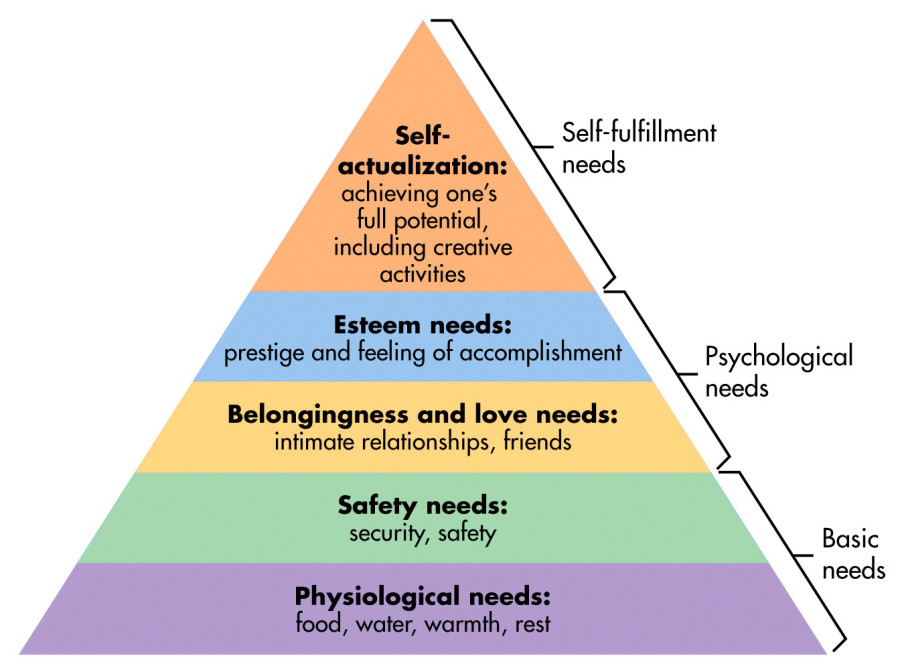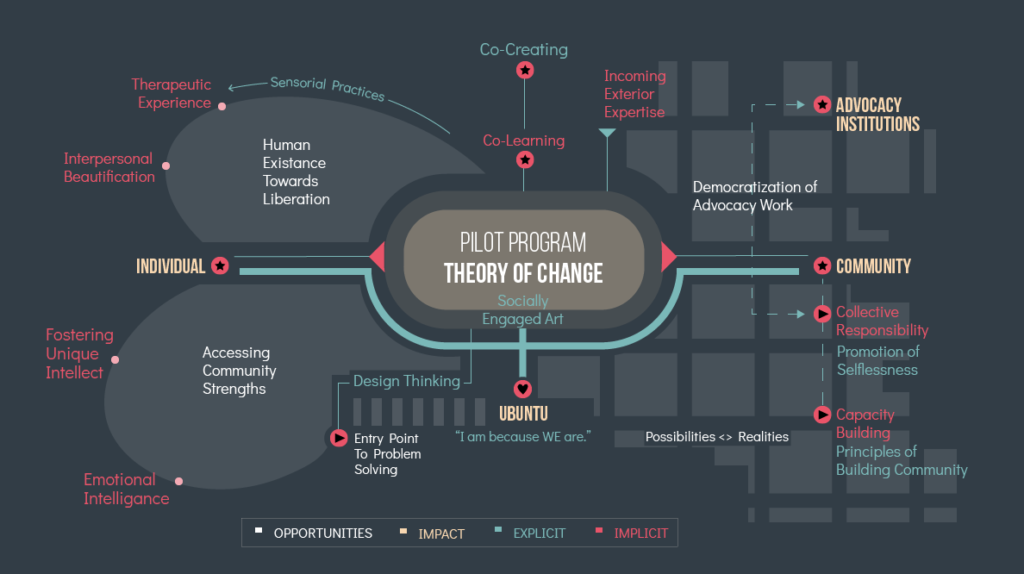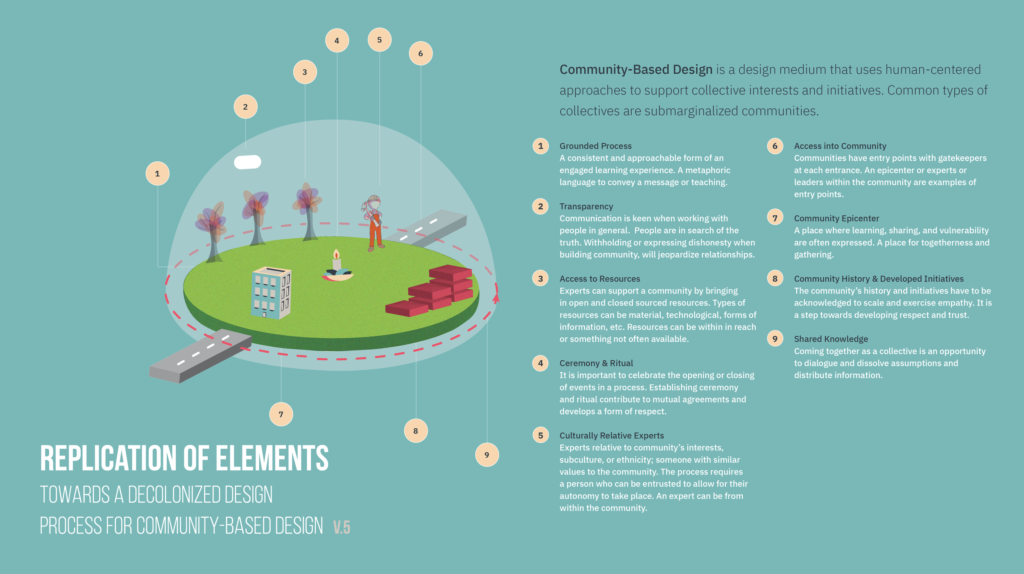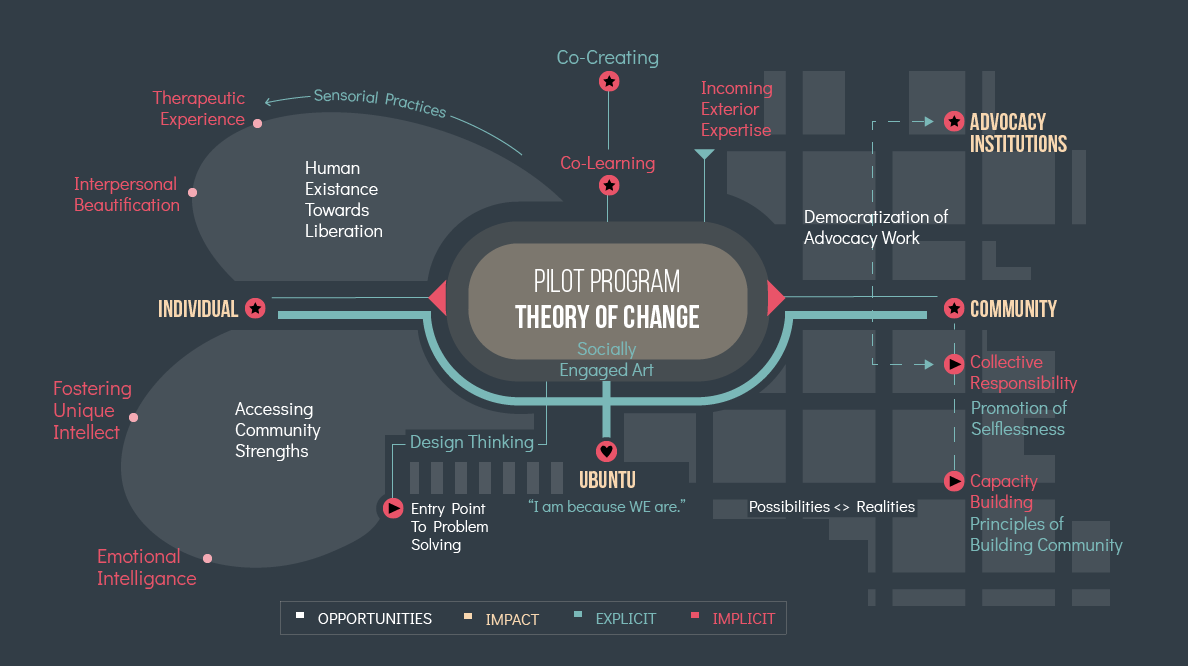EVALUATION OF FRAMEWORKS AND MODELS
Overall, the project felt genuine, and the work is much needed in the Jornalero community. Practicing capacity-building was doable and in most cases easy for me. But it is also exhausting. It is as if you have to perform a character continuously. My challenge as an artist/facilitator was the curiosity of where people were taking their ideas and allowing the state of flow carry over the objective of an activity. The Transpedagogy Framework did guide most of my process. Perhaps, that is why I use SEA as an approach to my transdisciplinary design practice. Translating design can be part of my ongoing transdisciplinary practice. I like the tinkering and sense-making and working with a community confronted with layers of oppression, I cannot demand to complete tasks when I am witnessing a physiological transformation into self-actualization.

For instance, Figure 2. Maslow’s Hierarchy of Needs theorizes that each layer beginning from bottom to top must be completed before arriving to a person’s self-actualization. In my process, decolonizing design, leading with the concept of Ubuntu, and grounding art as the messenger deconstructs the order Maslow’s theory.

Path to Measuring Impact
The task is to not only to teach design thinking to a resilient community but to acknowledge the various ways a project like this can create an impact in their ecosystem and beyond. Figure 3. Path to Measuring Impact is a potential way to measure impact for the program and more iterations of the program. The left side of the diagram shows what currently has transpired from the workshops. The right side of the diagram is the larger scale goal. Continuing to practice projects like this allows for the democratization of work and the support of the collective.

Replication of Elements
The most critical question I was asked from mentors was the replication of process. How might this project continue with or without me? My first step will be to deliver a document to NICE and the Jornalero community that tells the story of our work together. In the document will be the methods used during the workshops. What I found most important was who will continue to facilitate workshop with the Jornalero communities if it is not I? During my process, I was able to identify key elements that are suggested to place into practice towards a decolonized design process when working with communities. Figure 4. Replication of Elements identifies nine elements. The figure model was further developed by inputs from transdisciplinary colleagues, Parsons’ faculty, and a workshop at DreamYard. The workshop at DreamYard focused on “Decolonizing the Maker.” The workshop took diverse creative disciplines and evaluated the oppressive elements in their own processes when working with communities. The workshop concluded by further supporting the model in Figure 4.
Experts and Autonomy
Bringing in culturally relevant experts is essential when working with communities. It is an opportunity to bring someone else into the community, that could teach or supply resources that a facilitator would not be able to do. Searching for the right person should be a natural process. A good expert is not just one with a skillset or discipline specialty, it is someone who shares similar values of the community. Therefore, a facilitator can grant autonomy to outside experts. During the workshops, I celebrated the contribution that colleagues and experts contributed to the Jornalero community by giving them a coin that represented trust. At the conclusion of the workshops, I also provided the participants with coins for their involvement and the co-development of trust as a collective.

